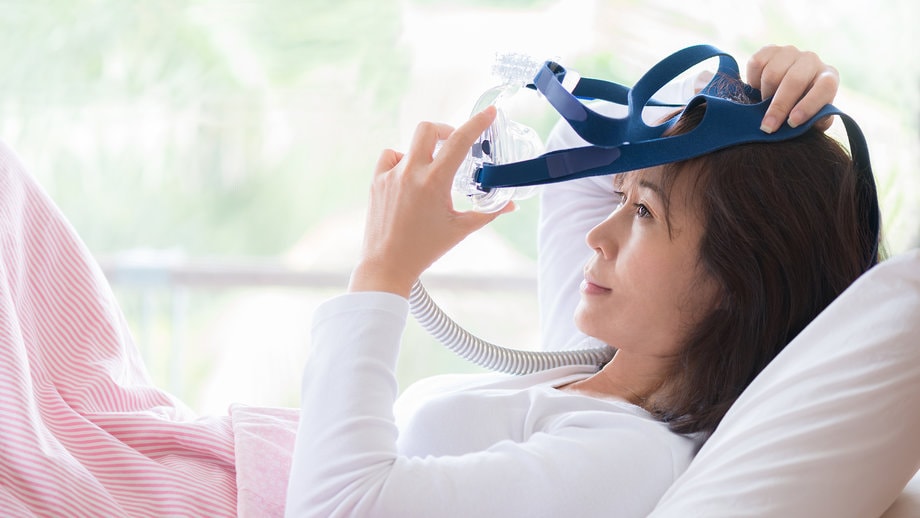Why Should You Consider Continuous Positive Airway Pressure (Cpap) Therapy?

Sleep apnea is a common sleep disorder characterized by repeated pauses in breathing during sleep. This interruption in breathing can lead to a variety of health issues, including daytime fatigue, difficulty concentrating, and an increased risk of heart disease and stroke. Continuous Positive Airway Pressure (CPAP) therapy has emerged as an effective treatment option for individuals with sleep apnea.
This therapy involves the use of a machine that delivers a constant stream of air pressure, keeping the airway open and preventing interruptions in breathing. CPAP therapy has numerous benefits, including improved sleep quality, reduced daytime sleepiness, and decreased risk of associated health problems.
However, finding the right CPAP equipment, adjusting to the therapy, and maintaining and cleaning the equipment are important factors to consider. Monitoring progress and adjusting settings, as well as exploring alternative treatment options, may also be necessary.
This article aims to provide an objective overview of why individuals should consider CPAP therapy as a viable treatment option for sleep apnea.
Key Takeaways
- CPAP therapy is an effective treatment option for sleep apnea.
- CPAP therapy improves sleep quality, reduces daytime sleepiness, and decreases the risk of associated health problems.
- Finding the right CPAP equipment and adjusting to the therapy are important factors to consider.
- Monitoring progress and adjusting settings may be necessary.
Understanding Sleep Apnea and Breathing Problems
Sleep apnea and other breathing problems during sleep are common conditions that can have a significant impact on one’s overall health and quality of life.
Sleep apnea is characterized by pauses in breathing or shallow breaths during sleep, leading to fragmented sleep patterns and daytime sleepiness. It is often accompanied by loud snoring and can result in reduced oxygen levels in the blood.
Untreated sleep apnea has been linked to a range of health issues, including high blood pressure, heart disease, stroke, and diabetes.
Continuous positive airway pressure (CPAP) therapy is a widely recommended treatment option for sleep apnea. It involves wearing a mask that delivers a continuous flow of air to keep the airway open during sleep, preventing episodes of apnea and improving sleep quality.
CPAP therapy has been shown to alleviate symptoms and reduce the risks associated with sleep apnea, leading to improved overall health and well-being.
How CPAP Therapy Works
By maintaining a consistent flow of air and preventing obstructions, continuous positive airway pressure (CPAP) therapy effectively alleviates the symptoms of sleep apnea.
CPAP therapy involves wearing a mask over the nose or mouth while sleeping, which is connected to a machine that delivers a continuous stream of pressurized air. This pressurized air acts as a splint to keep the airway open, preventing collapse and obstruction during sleep.
CPAP therapy has been proven to be highly effective in reducing the frequency of apnea episodes, improving oxygen levels in the blood, and promoting restful sleep. Additionally, CPAP therapy has been associated with several other benefits, including decreased daytime sleepiness, improved cognitive function, and reduced risk of cardiovascular complications.
Overall, CPAP therapy is a reliable and evidence-based treatment option for individuals with sleep apnea.
Markdown list:
- Maintains a consistent flow of air
- Prevents obstructions in the airway
- Reduces the frequency of apnea episodes
- Improves oxygen levels in the blood
Benefits of CPAP Therapy
This paragraph will discuss the benefits of CPAP therapy, including improved sleep quality and reduced daytime sleepiness, decreased risk of complications related to sleep apnea, and enhanced overall health and well-being.
CPAP therapy has been shown to significantly improve sleep quality by keeping the airway open and preventing interruptions in breathing during sleep. This leads to a reduction in daytime sleepiness and an increase in energy levels throughout the day.
Additionally, CPAP therapy can help decrease the risk of complications associated with sleep apnea, such as high blood pressure, heart disease, and stroke. By ensuring proper oxygenation and uninterrupted sleep, CPAP therapy promotes overall health and well-being for individuals with sleep apnea.
Improved sleep quality and reduced daytime sleepiness
Enhancing sleep quality and minimizing excessive daytime somnolence can be achieved by considering the implementation of continuous positive airway pressure (CPAP) therapy. CPAP therapy effectively combats sleep apnea, a common sleep disorder characterized by pauses in breathing during sleep, by delivering a constant flow of air pressure to keep the airways open.
This continuous positive airway pressure prevents the collapse of the upper respiratory tract, allowing for uninterrupted breathing and improved sleep quality. By ensuring a restful night’s sleep, CPAP therapy helps individuals wake up feeling refreshed and revitalized, reducing daytime sleepiness.
Studies have shown that CPAP therapy significantly decreases daytime somnolence, leading to improved alertness and overall cognitive functioning throughout the day. Therefore, considering CPAP therapy can positively impact sleep quality and reduce excessive daytime sleepiness, ultimately contributing to a healthier and more productive lifestyle.
The decreased risk of complications related to sleep apnea can be attributed to the implementation of continuous positive airway pressure (CPAP) therapy.
Sleep apnea is a condition characterized by repeated interruptions in breathing during sleep. These interruptions can lead to various complications such as hypertension, cardiovascular disease, stroke, and diabetes.
CPAP therapy works by providing a constant stream of pressurized air, which helps to keep the airway open and prevents the interruptions in breathing. By ensuring a continuous flow of oxygen, CPAP therapy reduces the risk of complications associated with sleep apnea.
Studies have shown that CPAP therapy can significantly improve cardiovascular health, reduce the risk of stroke, and lower blood pressure levels. Therefore, considering CPAP therapy can be beneficial in decreasing the risk of complications related to sleep apnea.
Enhanced overall health and well-being
Implementing a comprehensive approach to managing sleep apnea can lead to significant improvements in overall health and well-being. Continuous Positive Airway Pressure (CPAP) therapy is a highly effective treatment option for sleep apnea, which can enhance various aspects of an individual’s health and well-being.
Here are three key ways in which CPAP therapy can contribute to enhanced overall health and well-being:
- Improved sleep quality: CPAP therapy helps to eliminate or reduce the frequency of sleep apnea episodes, allowing individuals to experience uninterrupted and restful sleep. This can lead to increased energy levels, improved mood, and enhanced cognitive function.
- Reduced daytime symptoms: By effectively treating sleep apnea, CPAP therapy can alleviate daytime symptoms such as excessive daytime sleepiness, fatigue, and difficulty concentrating. This can significantly improve an individual’s overall quality of life and productivity.
- Lower risk of associated health conditions: Untreated sleep apnea is associated with an increased risk of various health conditions, including hypertension, cardiovascular disease, and diabetes. CPAP therapy can help to reduce this risk by ensuring proper oxygenation and preventing the negative health consequences of untreated sleep apnea.
By addressing the underlying causes of sleep apnea and promoting better sleep, CPAP therapy can contribute to enhanced overall health and well-being.
Finding the Right CPAP Equipment
Selecting appropriate CPAP equipment is crucial for effective treatment of sleep apnea. The right CPAP equipment can optimize therapy outcomes and improve patient compliance. When choosing CPAP equipment, it is important to consider individual needs and preferences.
The first step is to consult a healthcare professional who can assist in determining the appropriate pressure settings and mask type. There are various types of CPAP machines available, including fixed-pressure machines and auto-titrating machines, which adjust pressure levels based on the patient’s needs throughout the night.
Additionally, there are different mask options such as nasal masks, full-face masks, and nasal pillows, each with their own advantages and disadvantages. Comfort, mask fit, and minimal air leakage are key factors to consider when selecting a mask.
Overall, finding the right CPAP equipment is crucial for ensuring effective and comfortable therapy.
Adjusting to CPAP Therapy
Adjusting to CPAP therapy can be a challenging process as individuals acclimate to the new sensation of wearing a mask while sleeping. However, with time and the right approach, the benefits of CPAP therapy can far outweigh the initial discomfort.
Here are three key points to consider when adjusting to CPAP therapy:
- Gradual acclimatization: It is important to gradually increase the duration of CPAP therapy each night to allow the body to adapt. Starting with short periods of wearing the mask and gradually extending the duration can help reduce feelings of claustrophobia or discomfort.
- Proper mask fit: Ensuring a proper fit of the CPAP mask is crucial for comfort and effective therapy. A mask that is too tight or too loose can cause discomfort or air leakage. Working with a healthcare professional to find the right mask size and type is essential.
- Emotional support: Adjusting to CPAP therapy can be emotionally challenging. Seeking support from healthcare professionals, support groups, or loved ones can provide guidance, encouragement, and reassurance during the adjustment period.
By following these guidelines and staying committed to the therapy, individuals can gradually adapt to CPAP therapy and experience the significant health benefits it offers.
Maintaining and Cleaning Your CPAP Equipment
Maintaining and cleaning CPAP equipment is essential for ensuring optimal hygiene and functionality, promoting the longevity of the equipment, and reducing the risk of respiratory infections. Regular cleaning of the CPAP machine, mask, and accessories helps to remove accumulated dirt, oils, and bacteria, improving air quality and preventing the formation of mold or other harmful microorganisms. It is important to follow the manufacturer’s instructions for cleaning, which typically involve disassembling the equipment and washing the components with mild soap and water. Additionally, regular replacement of disposable parts, such as filters and tubing, is necessary to maintain effective therapy. By implementing a proper cleaning routine, CPAP users can enhance the overall performance of their equipment, ensuring a comfortable and safe sleep therapy experience.
Table:
| Equipment Component | Cleaning Frequency | Recommended Method | ||||
|---|---|---|---|---|---|---|
| Machine | Weekly | Wipe with damp cloth and mild soap | ||||
| Mask | Daily | Wash with mild soap and water | ||||
| Tubing | Weekly | Soak in warm soapy water and air dry | ||||
| Filters | Monthly | Replace with new filters | Humidifier | Monthly | Clean with vinegar and water solution |
Monitoring Progress and Adjusting Settings
Monitoring progress and adjusting settings is an important aspect of managing one’s sleep therapy experience with a CPAP machine. Regular monitoring allows individuals to assess the effectiveness of their treatment and make necessary adjustments for optimal results.
One key parameter to monitor is the apnea-hypopnea index (AHI), which measures the number of apnea and hypopnea events per hour. A lower AHI indicates better treatment efficacy.
Additionally, tracking data such as leak rate, mask pressure, and usage hours can provide valuable insights into the quality of therapy. By reviewing this data regularly, individuals can identify any issues or trends that may require adjustments to the CPAP settings or equipment.
This proactive approach ensures that the therapy remains effective and helps individuals achieve the intended benefits of CPAP therapy.
Exploring Alternative Treatment Options
This paragraph will discuss alternative treatment options for sleep apnea, including non-invasive treatments and surgical options for severe cases.
Non-invasive treatments are often explored as an alternative to continuous positive airway pressure (CPAP) therapy and may include oral appliances, positional therapy, and lifestyle changes.
In cases where sleep apnea is severe and other treatments have been ineffective, surgical options such as uvulopalatopharyngoplasty or maxillomandibular advancement may be considered.
Other non-invasive treatments for sleep apnea
Another effective treatment option for sleep apnea includes oral appliances that help to keep the airway open during sleep. These appliances are custom-made and fit comfortably in the mouth, similar to a sports mouthguard. They work by repositioning the jaw and tongue to prevent the collapse of the airway.
Oral appliances have been found to be effective in reducing sleep apnea symptoms and improving sleep quality. They are particularly beneficial for individuals who prefer a non-invasive treatment option or cannot tolerate continuous positive airway pressure (CPAP) therapy. Additionally, oral appliances are portable and easy to use, making them convenient for travel.
It is important to consult with a healthcare professional to determine the most suitable treatment option for each individual’s specific condition and needs.
Surgical options for severe cases of sleep apnea
In addition to non-invasive treatments, surgical options are available for severe cases of sleep apnea. These procedures aim to correct anatomical abnormalities in the upper airway, which can contribute to the obstruction.
One surgical option is uvulopalatopharyngoplasty (UPPP), which involves removing excess tissue from the throat to widen the airway.
Another option is genioglossus advancement, where the muscle that controls the movement of the tongue is repositioned to prevent it from blocking the airway during sleep.
Maxillomandibular advancement is a more extensive surgery that involves moving the upper and lower jaws forward to enlarge the space behind the tongue.
These surgical interventions may be considered when non-invasive treatments have been unsuccessful or are not suitable for the patient. However, it is important to note that these surgeries are associated with risks and potential complications. Therefore, a thorough evaluation and discussion with a healthcare professional is essential before considering surgical options.
Frequently Asked Questions
Are there any side effects of using CPAP therapy?
Yes, there can be side effects associated with using CPAP therapy. These may include nasal congestion, dry mouth, skin irritation, headaches, and stomach bloating. However, these side effects are usually mild and can be managed with proper adjustments and support from healthcare professionals.
Is CPAP therapy covered by insurance?
CPAP therapy is often covered by insurance, as it is considered a medically necessary treatment for obstructive sleep apnea. Insurance coverage varies, so it is important to check with your specific insurance provider for details.
Can CPAP therapy be used for children with sleep apnea?
CPAP therapy can be used for children with sleep apnea. It is a non-invasive treatment that helps maintain an open airway during sleep, improving oxygen levels and reducing symptoms such as snoring and daytime sleepiness.
How long does it take to see improvements in sleep apnea symptoms with CPAP therapy?
Improvements in sleep apnea symptoms with CPAP therapy can typically be seen within a few weeks. However, individual responses may vary, and it is important to adhere to the therapy consistently for optimal results.
Can CPAP therapy be used for people with severe allergies or sinus issues?
CPAP therapy can be used for people with severe allergies or sinus issues. It helps to keep the airway open by delivering a continuous stream of air, reducing congestion and improving breathing during sleep.











